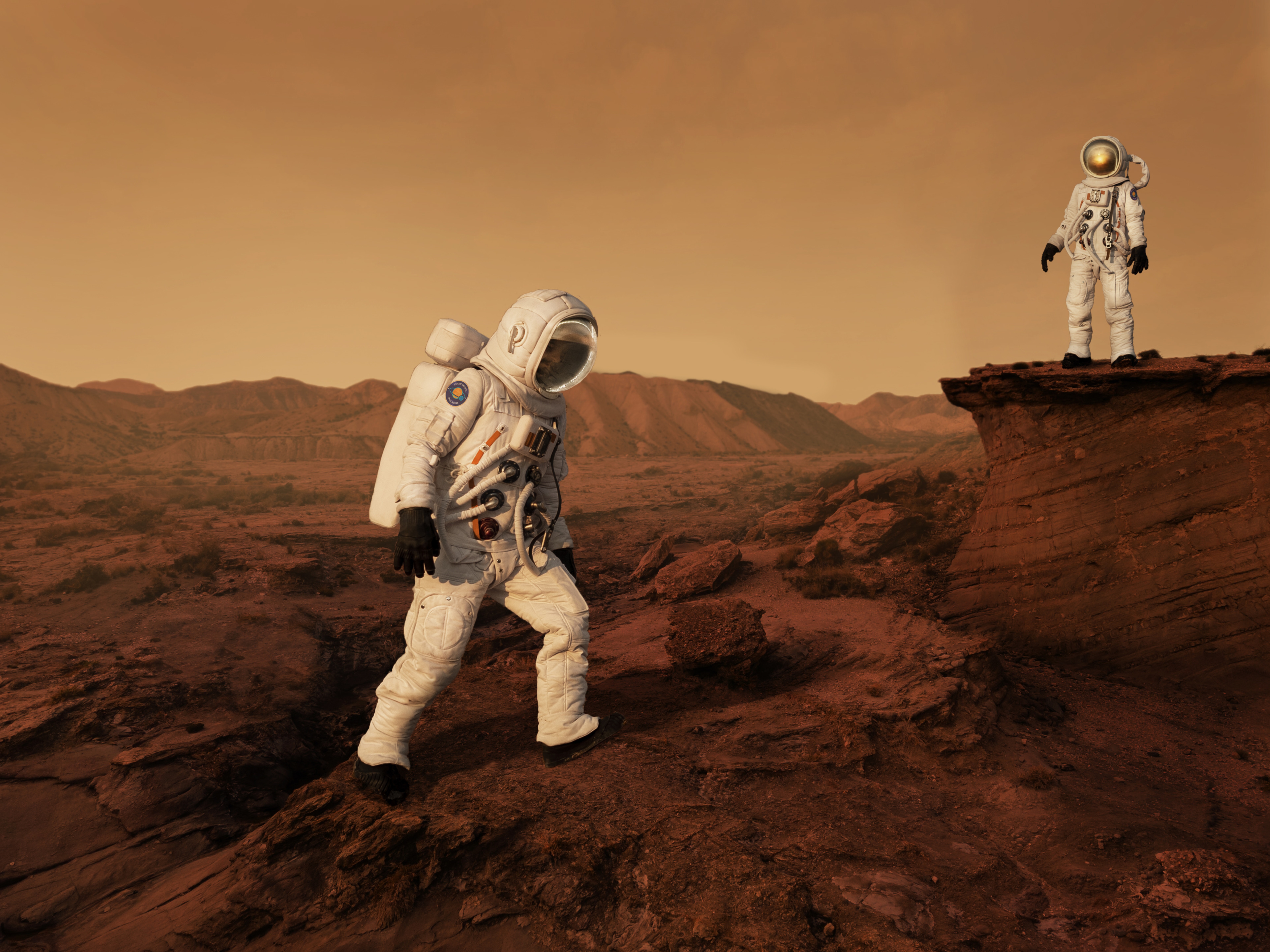
Chapter One :
The human body adapts to a variety of physical and physiological changes associated with living and working in space. These include elements such as microgravity, radiation, extreme temperatures, low pressure, isolation, and confinement. The longer an astronaut remains in space, the more significant are the changes that occur. Some of these changes are noticed immediately (e.g. reduced blood volume and diminished reflexes), while others may not present themselves for months or years.
Types of effects :
1- Decompression sickness :
Decompression sickness (DCS) results when the body is exposed to rapid and significant decreases in atmospheric pressure. DCS is called "the bends" among scuba divers, who can be affected by the sickness if they resurface, or decompress, too quickly. It occurs when nitrogen, normally dissolved in the blood and body tissues, comes out of solution and forms bubbles as a result of the rapid decrease in pressure. Tiny nitrogen bubbles in the bloodstream and tissues can lead to a variety of symptoms ranging from numbness and tingling to joint pain or even death.
Implications for astronauts :
Construction of the International Space Station (ISS) requires over 160 assembly and maintenance extravehicular activities (EVAs), also known as spacewalks. When doing a spacewalk, astronauts wear either the American EVA Mobility Unit (EMU), or the Russian Orlan suit (about 5.6 psi). Rapid decompression from normal cabin pressure to a lower atmospheric pressure will result in DCS if appropriate countermeasures are not taken.
Breathing 100% pure oxygen before a sudden exposure to low atmospheric pressure decreases the risk of developing DCS by eliminating nitrogen from the tissues. A 12-hour decompression protocol using 100% oxygen pre-breathe has successfully protected astronauts from DCS during EVAs from the space shuttle. For EVAs performed from the International Space Station (ISS) an efficient, equally effective method of preventing DCS is being developed.
2- Muscles :
While living and working in space is mentally strenuous, the absence of gravity makes working in a spacecraft physically undemanding. On Earth, we must constantly use certain muscles to support ourselves against the force of gravity. Because astronauts work in a weightless (microgravity) environment, very little muscle contraction is needed to support their bodies.
Astronauts experience up to a 20% loss of muscle mass on spaceflights lasting five to 11 days. This corresponds to a loss of strength that can be potentially dangerous if an astronaut must perform an emergency procedure upon re-entry into Earth's gravitational field. The only way to minimize muscle atrophy in space is through intensive exercise, particularly strength training exercises, combined with an adequate diet.